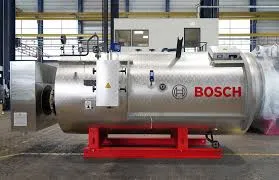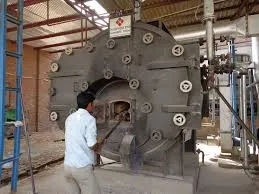
ມ.ຖ. . 04, 2025 11:40 Back to list
Biomass fired steam boiler
Draining a steam boiler is an essential maintenance task that ensures efficient performance and longevity of the heating system. A properly drained boiler helps in preventing corrosion, scaling, and sediment build-up, which can lead to costly repairs or even system failure. Here’s a comprehensive guide on how to drain your steam boiler effectively, drawing from years of hands-on experience and expert recommendations.
Once the boiler is fully drained, close the drain valve securely. It’s crucial to ensure no leaks or drips to maintain system integrity. At this point, it might be beneficial to perform a visual inspection inside the boiler for rust or scale build-ups. This could be a precursor to scheduling a professional descaling or cleaning service if required. Refilling the boiler is the next vital step. Replenish the boiler with fresh, treated water to minimize future scaling or corrosion. Using demineralized or conditioned water can significantly enhance the efficiency and lifespan of the boiler by preventing mineral deposits. After refilling, power on the boiler, allowing it to gradually reach the operating temperature. Listen for any unusual noises or leaks, which might suggest improper drainage or damage during the process. Reinstate any safety features that were disabled during the maintenance. Consistent documentation of each draining process, including observed water condition and any issues, is an excellent practice. This information becomes a critical asset, enhancing the predictability of future maintenance needs and enabling informed decisions regarding potential professional servicing. In conclusion, regular and proper drainage of a steam boiler is not merely a recommendation but a necessary practice that underscores effective boiler maintenance. It ensures safety, prolongs system lifespan, and enhances energy efficiency. Entrusting the process to experienced individuals further underscores its reliability, ensuring peace of mind and optimal performance of your steam boiler system.


Once the boiler is fully drained, close the drain valve securely. It’s crucial to ensure no leaks or drips to maintain system integrity. At this point, it might be beneficial to perform a visual inspection inside the boiler for rust or scale build-ups. This could be a precursor to scheduling a professional descaling or cleaning service if required. Refilling the boiler is the next vital step. Replenish the boiler with fresh, treated water to minimize future scaling or corrosion. Using demineralized or conditioned water can significantly enhance the efficiency and lifespan of the boiler by preventing mineral deposits. After refilling, power on the boiler, allowing it to gradually reach the operating temperature. Listen for any unusual noises or leaks, which might suggest improper drainage or damage during the process. Reinstate any safety features that were disabled during the maintenance. Consistent documentation of each draining process, including observed water condition and any issues, is an excellent practice. This information becomes a critical asset, enhancing the predictability of future maintenance needs and enabling informed decisions regarding potential professional servicing. In conclusion, regular and proper drainage of a steam boiler is not merely a recommendation but a necessary practice that underscores effective boiler maintenance. It ensures safety, prolongs system lifespan, and enhances energy efficiency. Entrusting the process to experienced individuals further underscores its reliability, ensuring peace of mind and optimal performance of your steam boiler system.
Share
Latest News
-
Coal Fired Thermal Oil Boiler with GPT-4 Turbo Efficiency
NewsAug.03,2025
-
Commercial Steam Boilers for Sale - AI Optimized Efficiency
NewsAug.02,2025
-
Efficient Biomass Fired Hot Water Boiler | AI Heating Solution
NewsAug.01,2025
-
High-Efficiency Gas Thermal Oil Boilers | HPT Models
NewsJul.31,2025
-
Oil Fired Hot Water Boilers Sale - High Efficiency & Affordable
NewsJul.31,2025
-
High-Efficiency Commercial Oil Fired Steam Boiler for Industry
NewsJul.30,2025
Related PRODUCTS
Copyright © 2025 HEBEI HONGZE BOILER MANUFACTURING CO., LTD. All Rights Reserved. Sitemap | Privacy Policy






















